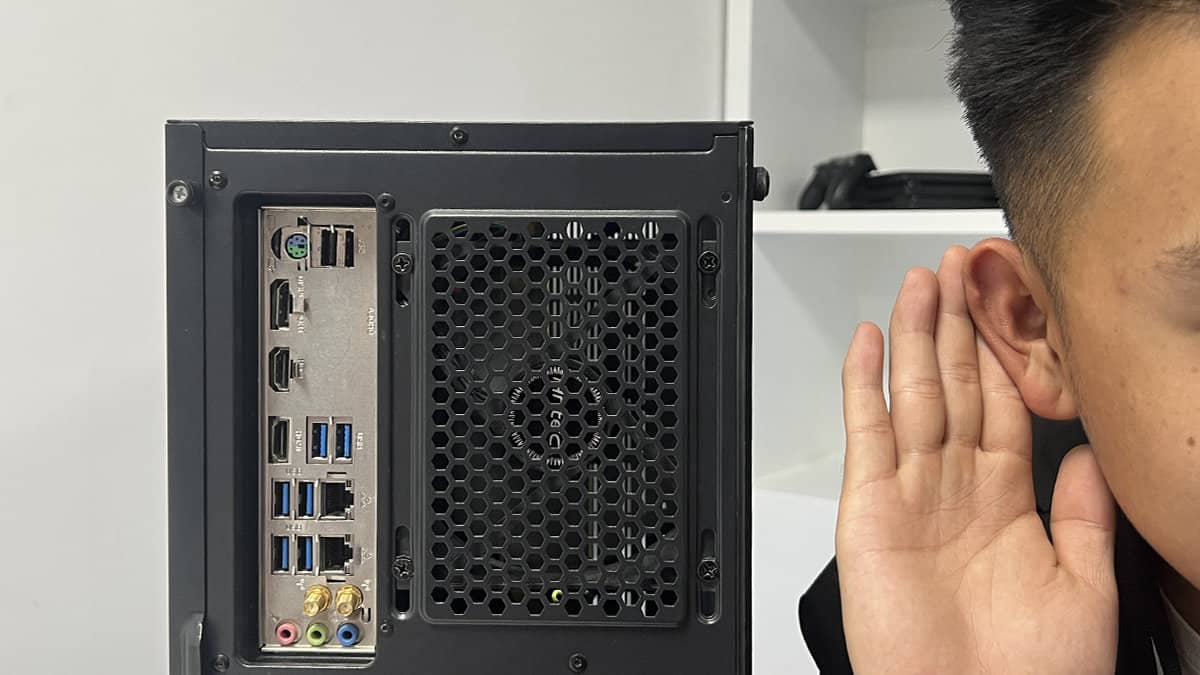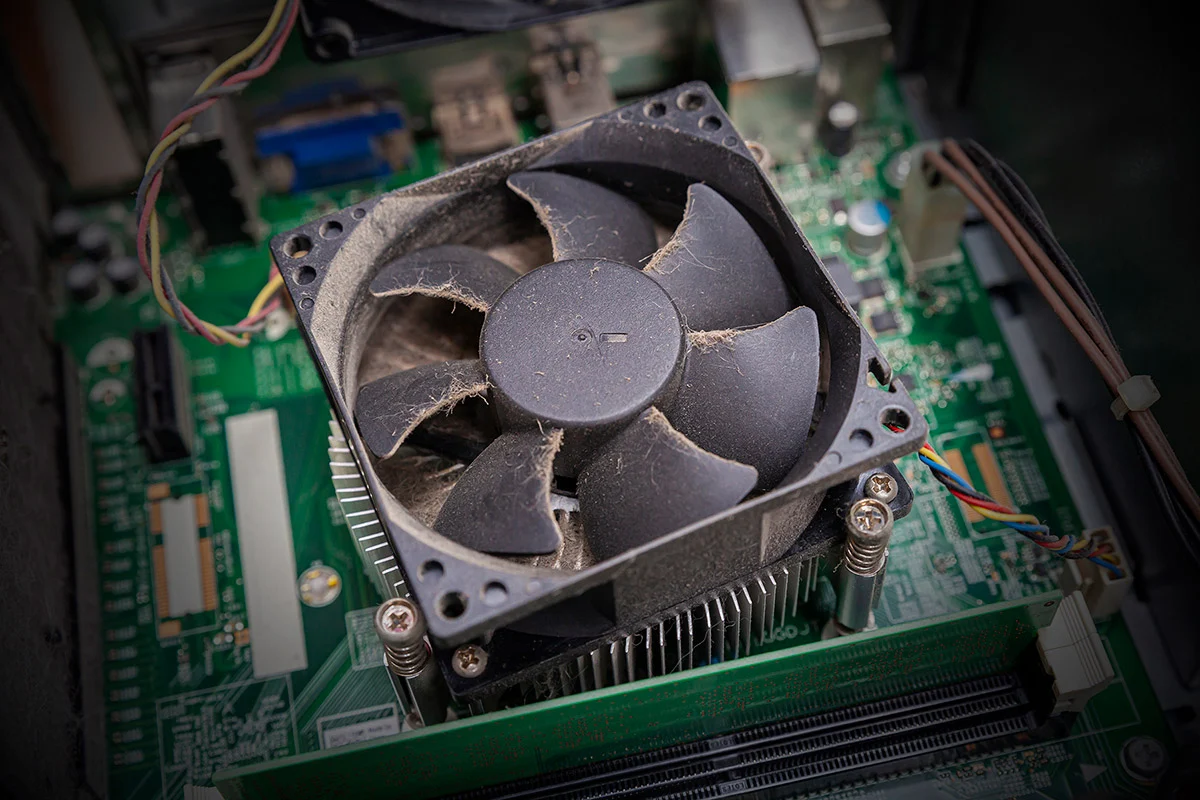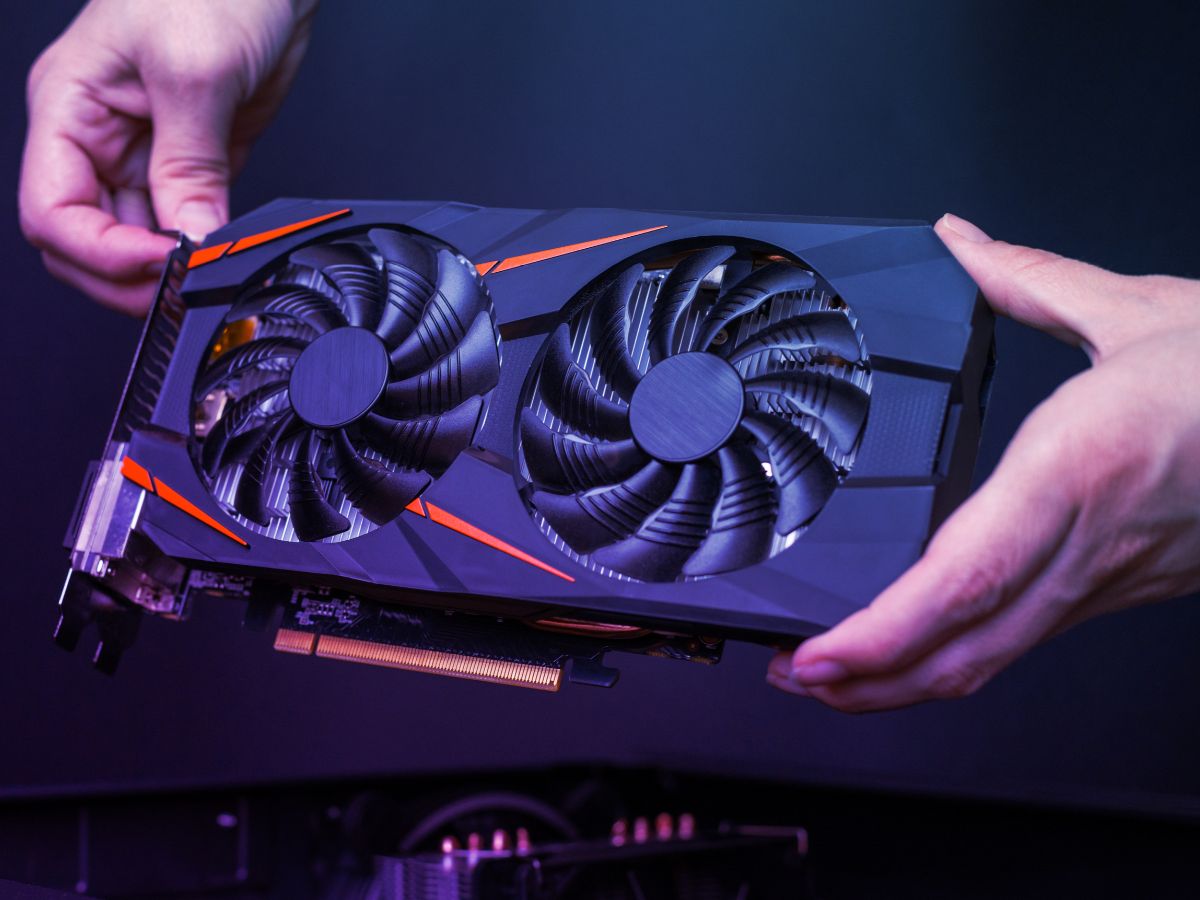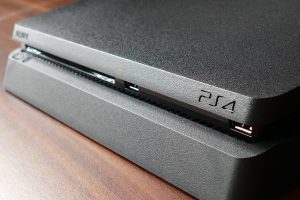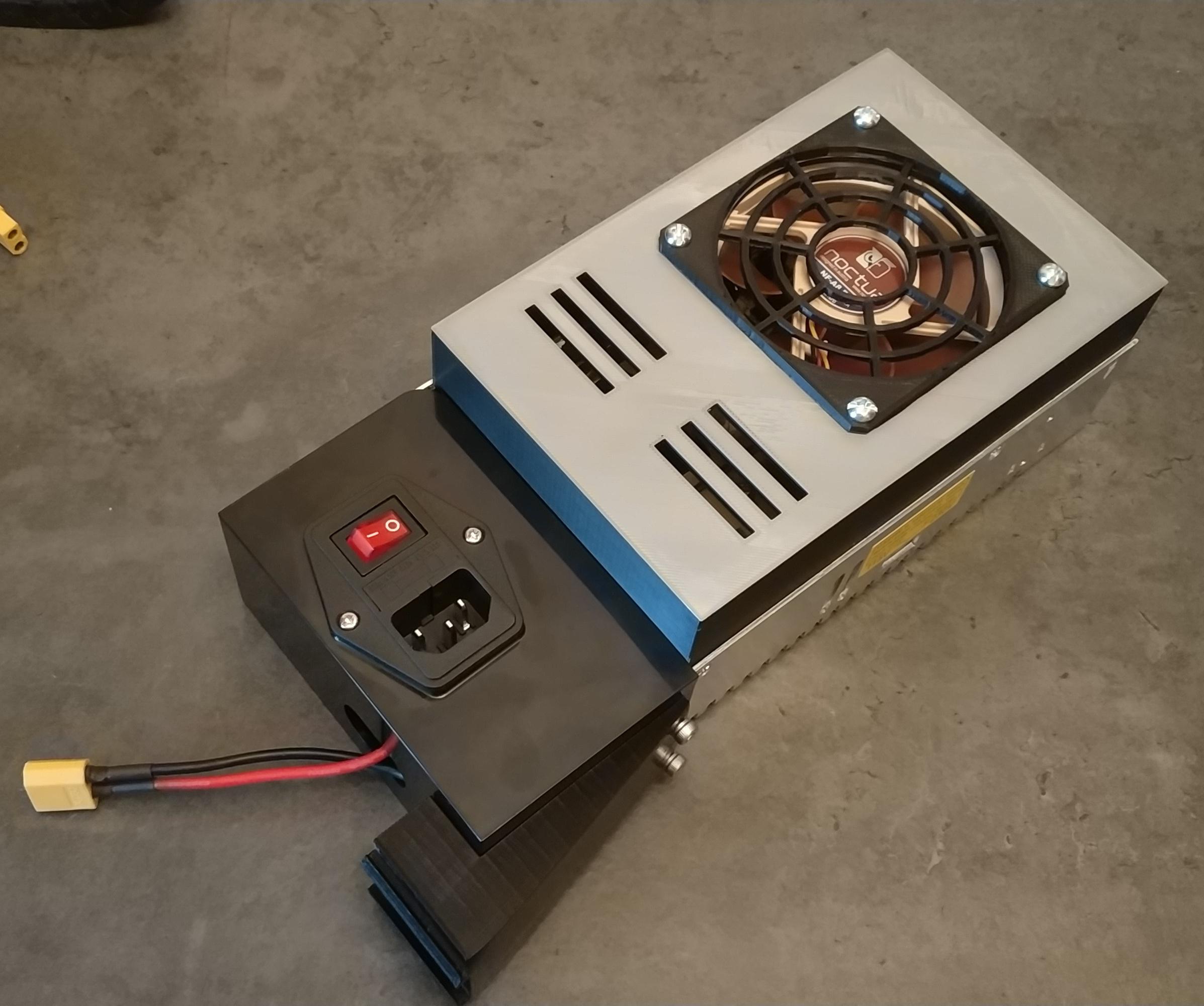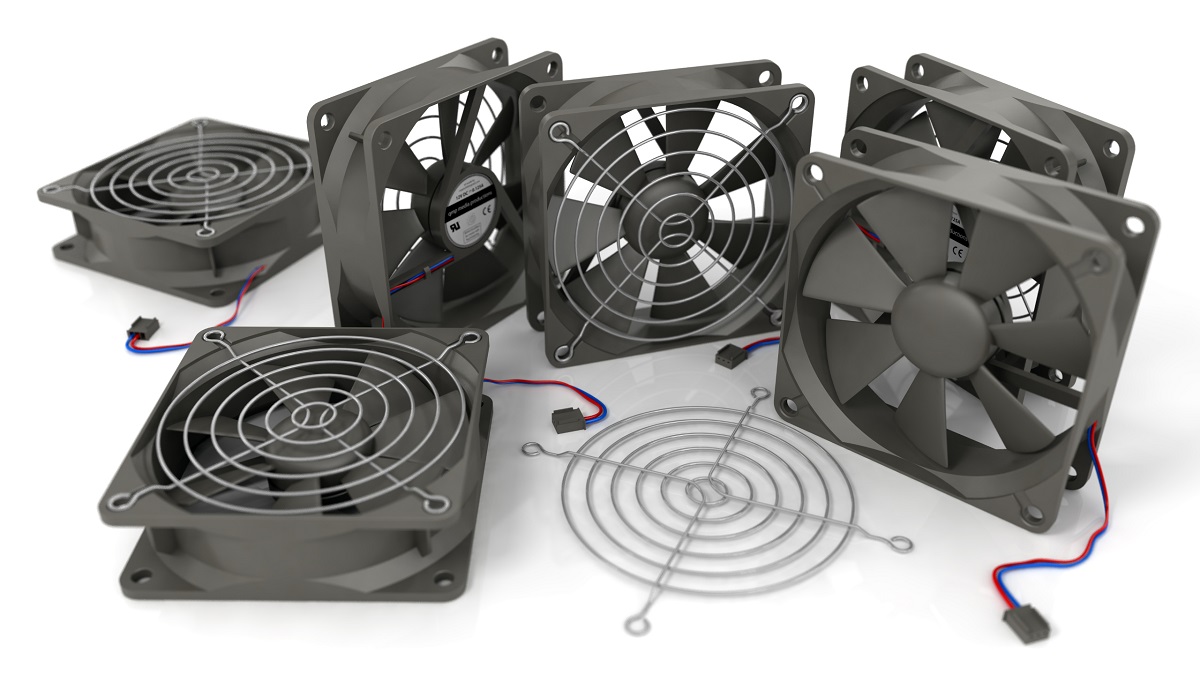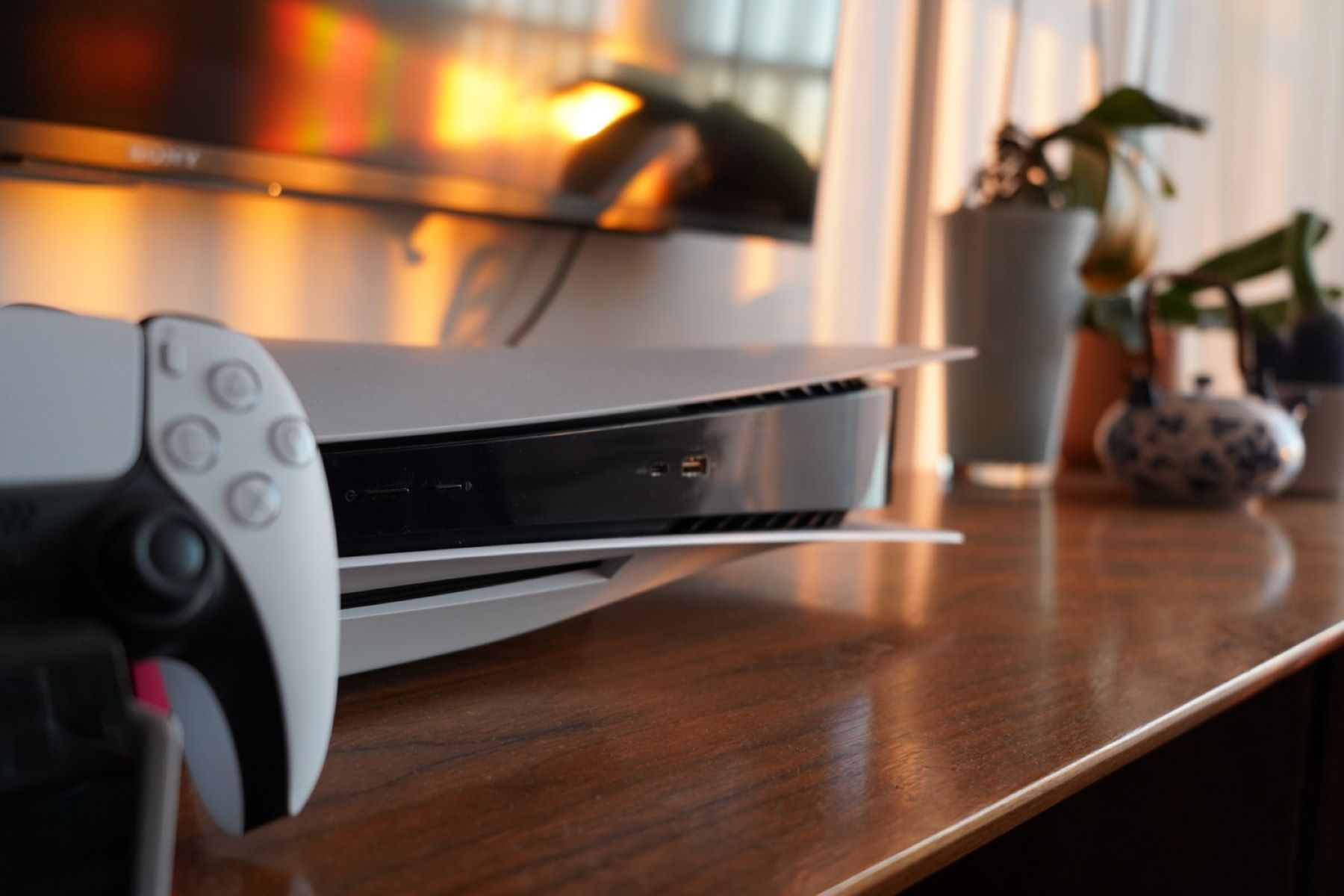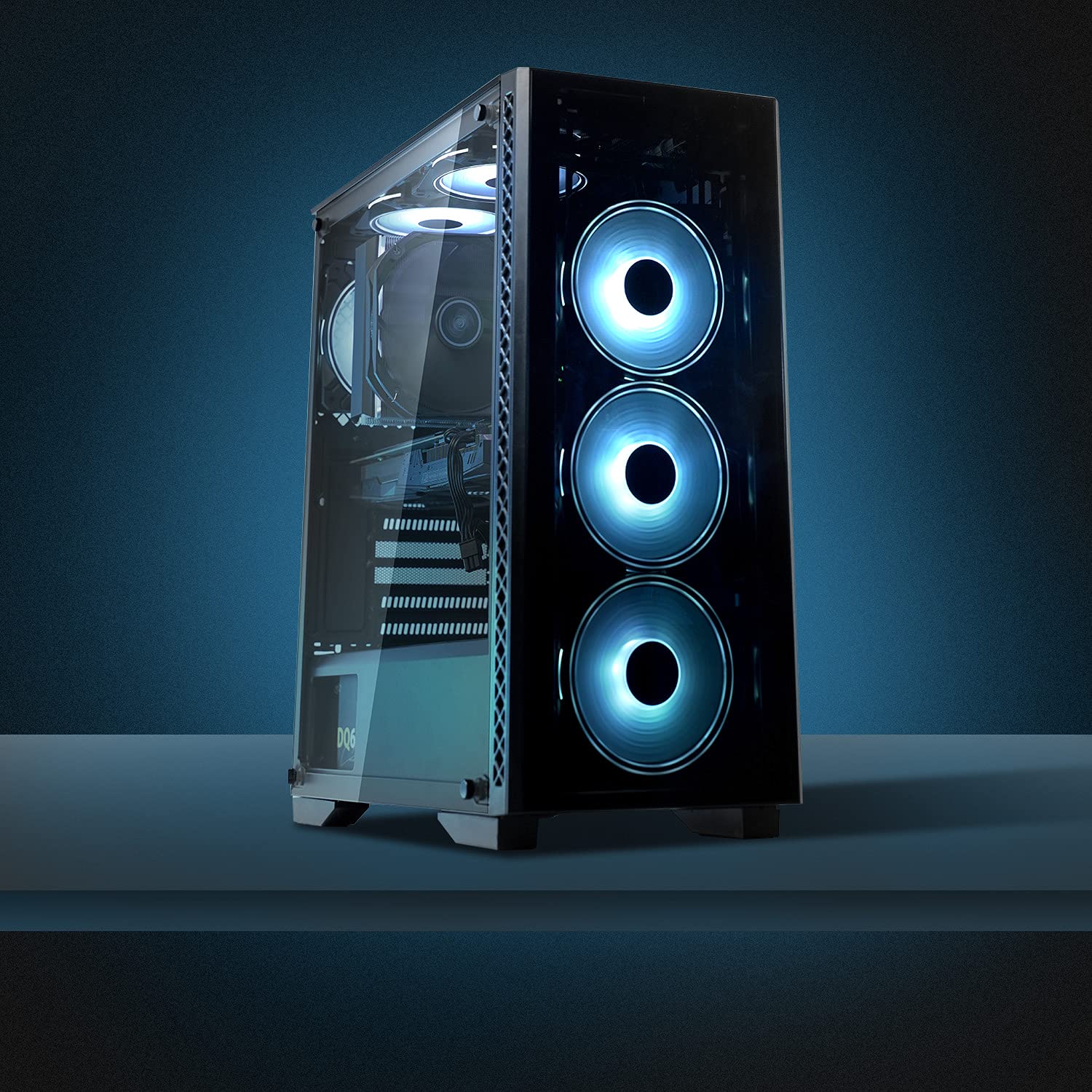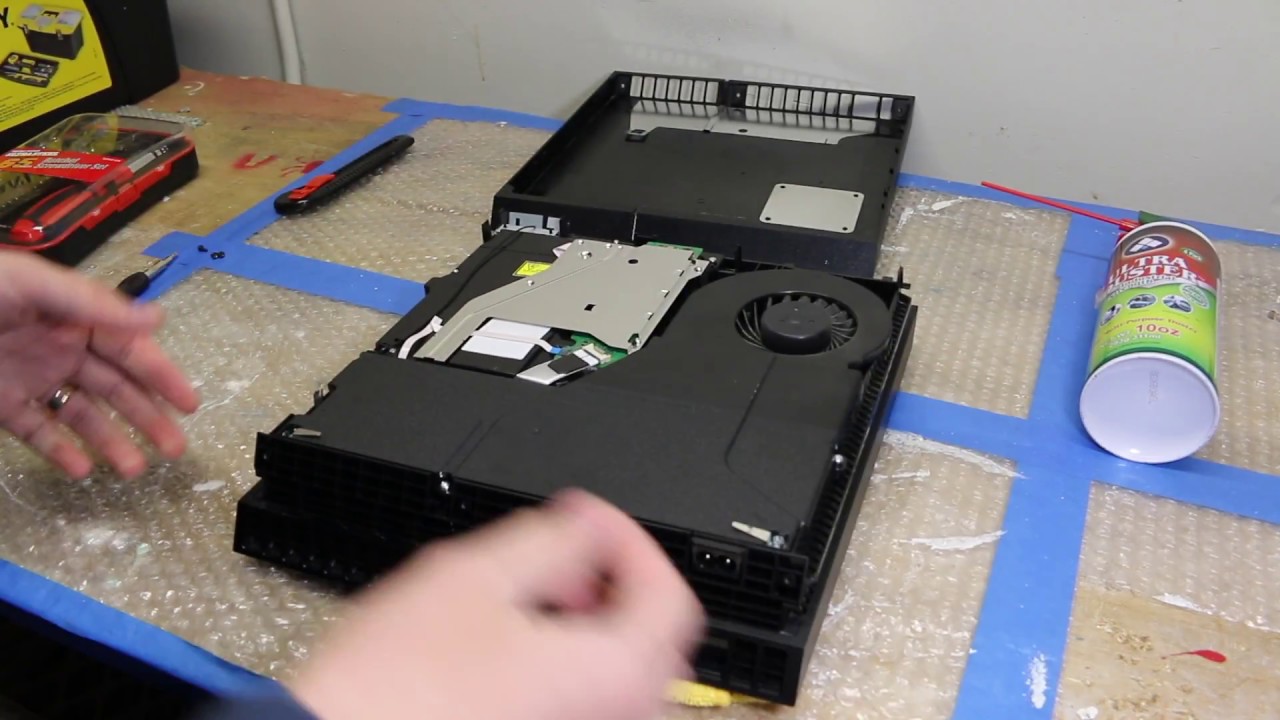Introduction
When building or maintaining a computer, one of the common issues that users may encounter is the noise coming from the case fan. Case fans are essential components that help in keeping the system cool by expelling hot air and drawing in cool air. However, they can sometimes become quite noisy, causing annoyance and distraction.
Understanding the reasons behind a loud case fan is crucial in solving this problem. There are various types of noises that a case fan can produce, including airflow noise, mechanical noise, and vibrational noise. Each type has its own potential causes and solutions. By identifying the specific noise and its source, users can take appropriate steps to reduce the noise level and achieve a more quiet and comfortable computing experience.
This article will explore the different types of case fan noise, common reasons why case fans can become loud, and provide practical tips and solutions to minimize case fan noise. By following these suggestions, users can enjoy a quieter computer, allowing for better concentration, improved productivity, and a more peaceful computing experience.
Why Do Case Fans Make Noise?
Case fans are designed to move air efficiently and effectively cool the components of a computer. However, various factors can contribute to the noise produced by case fans. Understanding the reasons behind this noise is essential in finding solutions to reduce it. Here are some common factors that cause case fans to make noise:
- Airflow Noise: Airflow noise occurs when air passes through the fan blades and creates turbulence. This can happen when the fan blades are spinning quickly or if there are obstructions in the airflow path. The turbulent air movement can generate a noticeable whooshing or rushing sound.
- Mechanical Noise: Mechanical noise is often caused by the movement of the fan’s motor and its components. As the fan spins, there can be vibrations or rattling sounds produced by loose parts or worn-out bearings. This type of noise is typically more of a clicking or grinding sound.
- Vibrational Noise: Vibrational noise is similar to mechanical noise, but it is caused by external factors such as the fan’s mounting or the case structure. When the fan vibrates against the case or other components, it can create a buzzing or humming noise. This type of noise can be particularly noticeable at higher fan speeds.
It is important to note that some level of noise is inevitable when using case fans, as they inherently produce sound while in operation. However, excessive noise can be indicative of an underlying issue that needs to be addressed.
By understanding the types of noise produced by case fans, users can start troubleshooting and identifying the specific factors causing the noise. Once the source is identified, appropriate measures can be taken to reduce or eliminate the noise, resulting in a quieter and more pleasant computing experience.
Types of Case Fan Noise
When it comes to case fan noise, there are three main types that users may encounter: airflow noise, mechanical noise, and vibrational noise. Understanding these different types of noise can help in identifying the source and implementing appropriate solutions. Let’s take a closer look at each of these types:
- Airflow Noise: Airflow noise is one of the most common types of noise associated with case fans. It occurs when the fan blades rotate at high speeds and cause turbulence in the air. This turbulence can result in a whooshing or rushing sound as the air passes through the fan. Airflow noise can be exacerbated by factors such as inefficient fan design, fan speed settings, or obstructions in the airflow path.
- Mechanical Noise: Mechanical noise is caused by the movement of the fan’s motor and its internal components. This can include sounds like clicking, grinding, or rattling. Mechanical noise can be a result of loose fan parts, worn-out bearings, or a fan that is not properly balanced. Over time, the continuous operation of the fan can lead to wear and tear, which can contribute to mechanical noise.
- Vibrational Noise: Vibrational noise is often associated with the interaction between the fan and its mounting or the case structure. When the fan vibrates against the case or other components, it can create a buzzing or humming noise. This type of noise is more prominent at higher fan speeds and can be influenced by factors such as the fan’s mounting method, the quality of the case, or the presence of any loose components.
It is worth noting that it is possible for multiple types of noise to occur simultaneously. Therefore, it is important to listen carefully and try to identify the specific type of noise or a combination of them. Once the type of noise is identified, users can proceed to address the underlying causes and implement appropriate solutions. By understanding the different types of case fan noise, users can take effective steps to minimize noise levels and create a more quiet and enjoyable computing environment.
Airflow Noise
Airflow noise is a common type of noise that is associated with case fans. It is caused by the movement of air passing through the fan blades, creating turbulence and resulting in audible sound. Understanding the factors that contribute to airflow noise can help in finding effective solutions to reduce it.
There are several potential causes of airflow noise:
- Fan Speed: High fan speeds can increase airflow noise. When the fan spins faster, the air passing through the blades creates more turbulence, leading to a louder noise. Adjusting the fan speed can help in reducing the noise level associated with airflow.
- Fan Design: The design and construction of the fan can also contribute to airflow noise. Fans with inefficient designs or fan blades that are not properly shaped or aligned can generate more turbulence, resulting in increased noise. Choosing fans with optimized design features can help in minimizing airflow noise.
- Airflow Obstructions: Obstructions in the airflow path can disrupt the smooth movement of air through the fan, leading to increased turbulence and noise. Dust buildup on the fan blades, cables obstructing the fan’s airflow, or components blocking the direct path of air can all contribute to airflow noise. Regularly cleaning the fan blades and ensuring clear airflow paths can help in reducing the noise caused by these obstructions.
- Fan Placement: Incorrect fan placement can also contribute to airflow noise. If a fan is too close to a solid surface, such as the case panel or other components, the air passing through the blades can create turbulent vibrations against these surfaces, resulting in increased noise. Ensuring proper clearance between the fan and surrounding components can help in minimizing airflow noise.
- Fan Grills and Filters: Fan grills and filters, while important for keeping dust out, can also restrict airflow and lead to increased turbulence and noise. If airflow noise is a concern, removing the fan grill or replacing it with a more open design can help in reducing the noise level.
By addressing these potential causes of airflow noise, users can significantly reduce the noise level produced by their case fans. It is important to experiment with different solutions and find the balance between noise reduction and proper cooling to ensure optimal performance and a quieter computing experience.
Mechanical Noise
Mechanical noise is another type of noise that can be generated by case fans. Unlike airflow noise, which is caused by the movement of air, mechanical noise originates from the fan’s motor and its internal components. Understanding the potential causes of mechanical noise can help in addressing and reducing this type of noise.
Here are some common causes of mechanical noise:
- Loose Parts: One of the main causes of mechanical noise is loose parts within the fan. Over time, the continuous rotation of the fan blades can result in wear and tear, causing components to become loose. Loose fan blades or housing can create rattling or clicking noises. Ensuring that all parts are properly secured and tightened can help reduce mechanical noise.
- Worn-out Bearings: Fan bearings play a crucial role in the smooth rotation of the fan blades. Over time, these bearings can become worn out, leading to increased friction and noise. Worn-out bearings often produce a grinding or humming sound. Regular maintenance, such as lubricating or replacing fan bearings, can help alleviate mechanical noise caused by bearing wear.
- Imbalanced Fan: A fan that is not properly balanced can result in mechanical noise. Imbalances can occur due to manufacturing defects or damage to the fan blades. This can cause the fan to vibrate or produce uneven rotations, leading to audible noise. Replacing or realigning imbalanced fans can help in reducing mechanical noise.
- Poor Quality Fans: Low-quality fans are more prone to producing mechanical noise. Cheaper fans may feature inferior construction materials or less precise manufacturing. These factors can result in increased noise during operation. Investing in high-quality fans from reputable manufacturers can help mitigate mechanical noise.
- Fan Age: Over time, even well-maintained fans can start to produce mechanical noise due to wear and tear. As fans age, the internal components can degrade, resulting in increased noise production. If the mechanical noise is persistent and cannot be resolved through other means, it may be necessary to replace the fan with a new one.
By addressing these potential causes of mechanical noise, users can significantly reduce the noise produced by their case fans. Regular maintenance, such as tightening loose parts and lubricating bearings, can help prolong the fan’s lifespan and minimize noise. Additionally, investing in high-quality fans and ensuring proper balancing can go a long way in mitigating mechanical noise and creating a quieter computing environment.
Vibrational Noise
Vibrational noise is another type of noise that can occur with case fans. Unlike airflow noise and mechanical noise, which originate from the fan itself, vibrational noise is caused by the interaction between the fan and its mounting or the case structure. Understanding the potential causes of vibrational noise can help in identifying and addressing this type of noise.
Here are some common causes of vibrational noise:
- Misalignment: If the fan is not properly aligned or mounted, it can cause vibrations when in operation. These vibrations can transfer to the case or other components, resulting in noticeable buzzing or humming noises. Ensuring that the fan is securely and properly mounted can help reduce vibrational noise.
- Mounting Method: The method used to mount the fan can also contribute to vibrational noise. Fans that are mounted using bolts or screws may produce more vibrations compared to fans mounted with rubberized grommets or anti-vibration mounts. Using vibration-dampening mounting options can help minimize the vibrational noise.
- Case Structure: The quality and design of the computer case can influence vibrational noise. A case with a sturdy and well-constructed frame can help dampen vibrations and reduce the transmission of noise. Cases with built-in vibration-dampening features or rubber gaskets can help in minimizing vibrational noise caused by the fan.
- Loose Components: Loose components within the case, such as hard drives or cables, can also contribute to vibrational noise. These components can vibrate when the fan is in operation, amplifying the noise. Ensuring that all internal components are securely fastened and properly organized can help in reducing vibrational noise.
- Fan Blades: Fan blades that are imbalanced or damaged can create additional vibrations when spinning. This can result in vibrational noise that is transmitted to the case or other components. Replacing imbalanced or damaged fan blades can help in reducing this type of noise.
By addressing these potential causes of vibrational noise, users can significantly reduce the noise produced by their case fans. Ensuring proper alignment, using vibration-dampening mounting options, and maintaining a well-constructed case structure can all assist in minimizing vibrational noise. Additionally, optimizing cable management and ensuring that all components are securely fastened can help create a more quiet computing environment.
Common Causes of Loud Case Fans
If your case fans are producing excessive noise, there are several common causes that you should consider. By identifying these causes, you can take appropriate steps to resolve the issue and minimize the noise produced by your case fans.
- Dirty Fan Blades: One of the most common causes of loud case fans is the accumulation of dust and debris on the fan blades. This buildup can disrupt the smooth flow of air and increase airflow noise. Regularly cleaning your case fans by gently wiping the blades with a cloth or using compressed air can help reduce noise caused by dust and debris.
- Fan Bearing Wear: Over time, the bearings in your case fans can wear out, resulting in increased mechanical noise. If you hear grinding, clicking, or rattling sounds coming from your fans, it may indicate that the bearings are worn out. Consider replacing the worn-out fan bearings to restore smooth and quiet operation.
- Fan Speed and RPM: Running your case fans at higher speeds can increase noise levels. When fans operate at higher RPM (revolutions per minute), they generate more airflow and can produce more noise. Adjusting the fan speed to a lower setting, either through the BIOS or using fan control software, can help reduce noise without compromising cooling performance.
- Poor Fan Quality: The quality of the case fans can also contribute to loud noise. Cheaper fans often come with lower-quality components that may produce more noise during operation. Investing in higher-quality fans from reputable manufacturers can significantly reduce noise levels and improve overall performance.
- Fan Placement and Obstructions: Incorrect fan placement or obstructions in the airflow path can cause turbulence and increase noise levels. Ensure that the fans are properly positioned and have sufficient clearance from other components. Avoid placing cables or objects in front of the fans that could obstruct the airflow and contribute to noise.
Identifying the specific cause or combination of causes behind the loud case fans is essential in finding the most effective solution. By addressing these common causes, you can significantly reduce noise levels, improve the overall performance and lifespan of your case fans, and create a more comfortable and quiet computing environment.
Dirty Fan Blades
One of the most common causes of loud case fans is the accumulation of dust and debris on the fan blades. Over time, dust particles can build up on the blades, disrupting the smooth flow of air and causing increased airflow noise. Cleaning your case fans regularly can help reduce noise caused by dirty fan blades.
Here are some essential steps to clean your case fan blades:
- Power Off and Unplug: Before starting the cleaning process, make sure to power off your computer and unplug it from the power source. This will prevent any potential accidents or damage to the components.
- Locate the Fans: Identify the case fans that need cleaning. Most computer cases have one or more fans positioned in various locations, such as the front, rear, or side panels.
- Gently Remove Dust: Use a soft, lint-free cloth or a small brush to gently wipe away the dust from the fan blades. Be careful not to apply too much pressure or bend the blades, as this can damage the fan. For hard-to-reach areas, compressed air can be used to blow away the dust particles.
- Check for Stubborn Debris: Sometimes, dust may accumulate in small crevices or stick to the fan blades. In such cases, you can use a cotton swab dampened with isopropyl alcohol to carefully remove the stubborn debris. Make sure to let the fan blades dry completely before powering on your computer.
- Regular Maintenance: Cleaning your case fans should be part of your regular computer maintenance routine. Aim to clean the fans at least once every three to six months, or more frequently if you live in a particularly dusty environment.
By keeping the fan blades clean, you can ensure optimal airflow, reduce turbulence, and minimize airflow noise. Regularly maintaining your case fans will not only help in reducing noise but also improve cooling performance and prolong the lifespan of the fans.
Fan Bearing Wear
Fan bearing wear is a common cause of loud case fans. Over time, the bearings that enable the smooth rotation of the fan blades can become worn out, leading to increased mechanical noise. If you hear grinding, clicking, or rattling sounds coming from your fans, it may indicate that the bearings are wearing out.
To address fan bearing wear and reduce the accompanying noise, consider the following steps:
- Identify the Affected Fan: Determine which fan is producing the noise. It can be helpful to listen closely and pinpoint the exact source of the noise. This will help you focus your efforts on the specific fan that requires attention.
- Replace the Fan Bearings: In some cases, if the fan is designed for bearing replacement, you can purchase replacement bearings from the fan manufacturer. If you are comfortable with opening up the fan, you can replace the worn-out bearings yourself. Follow the manufacturer’s instructions or seek guidance from online resources for disassembling and reassembling the fan properly.
- Consider Upgrading the Fan: If the fan bearings are not replaceable or if you prefer a simpler solution, consider upgrading to a new fan. Look for fans that are known for their high-quality bearings, such as those with fluid dynamic bearings (FDB) or ball bearings. These types of bearings tend to have longer lifespans and produce less noise.
- Consult a Professional: If you are uncomfortable or unsure about replacing the fan bearings yourself, it is recommended to consult a professional technician. They can help identify the issue and provide expert assistance in either repairing or replacing the fan.
Addressing fan bearing wear is crucial because continuing to use a fan with worn-out bearings can lead to further damage and potential failure. By replacing the bearings or upgrading to a new fan, you can restore smooth and quiet fan operation, ensuring optimal cooling performance and a more peaceful computing environment.
Fan Speed and RPM
The speed at which your case fans operate can have a significant impact on the noise levels they produce. Running fans at higher speeds can result in increased airflow noise. Fortunately, adjusting the fan speed and RPM (revolutions per minute) can help reduce noise without compromising cooling performance.
Here are some steps you can take to manage fan speed and RPM:
- BIOS Settings: Many motherboards offer BIOS options to control fan speed. Access your BIOS settings and look for options related to fan control. These settings can allow you to adjust fan speed based on temperature thresholds or set a specific fan speed profile. Experiment with different settings to find a balance between noise reduction and cooling performance that suits your needs.
- Fan Control Software: Additionally, there are software applications available that allow for fan speed control within the operating system. These programs provide more flexibility and customization options in adjusting fan speed. Popular software options include SpeedFan, HWiNFO, and MSI Afterburner.
- Aftermarket Fan Controllers: If your motherboard does not have built-in fan control or if you are looking for more advanced control options, you can invest in an aftermarket fan controller. These devices allow you to control fan speed manually or automatically adjust it based on temperature. They often come with knobs or buttons for easy adjustment.
- Fan Speed Adapters or Resistor Cables: Another option to reduce fan speed is to utilize fan speed adapters or resistor cables. These accessories can be connected to the fan’s power cable to reduce the voltage supplied to the fan, thereby lowering the fan speed and noise level. However, keep in mind that reducing fan speed too much can affect cooling performance, so monitor your system temperatures to ensure they stay within safe limits.
By adjusting fan speed and RPM, you can strike a balance between noise reduction and adequate cooling. It is important to monitor your system’s temperatures to ensure that reducing fan speed does not lead to overheating. Experiment with different settings and tools to find the optimal fan speed for your system, and enjoy a quieter computing experience without compromising cooling efficiency.
Poor Fan Quality
The quality of the case fans you use can significantly impact the noise levels they produce. Poor quality fans are more prone to generating loud noise during operation. Investing in higher-quality fans can help minimize noise and improve overall performance.
Consider the following factors when evaluating fan quality:
- Manufacturer Reputation: Research and choose fans from reputable manufacturers known for their quality and reliability. Manufacturers with a proven track record often prioritize fan design, construction, and noise reduction.
- Fan Bearing Type: Different fan bearing types have varying levels of noise and longevity. Fans with fluid dynamic bearings (FDB) or ball bearings tend to be quieter and have longer lifespans compared to sleeve bearings. Pay attention to the bearing type when selecting fans.
- Noise Ratings: Manufacturers often provide noise ratings for their fans. Look for fans with lower decibel (dB) ratings, as these indicate quieter operation. However, keep in mind that noise levels can vary based on factors such as fan speed and airflow requirements.
- Build Quality: Assess the build quality of the fans. Look for sturdy construction, solid fan blades, and properly balanced fan components. Higher-quality materials and attention to detail in manufacturing can contribute to quieter fan operation
- Reviews and Recommendations: Read customer reviews and seek recommendations from trusted sources. Feedback from other users can provide insights into the quality and noise performance of different fan models.
Investing in higher-quality fans may require a slightly higher upfront cost but can result in a quieter and more reliable computing experience. Quality fans not only reduce noise but also improve cooling efficiency, which can lead to better overall system performance and longevity.
Keep in mind that even with high-quality fans, it is important to consider other factors such as fan speed settings and proper fan placement to ensure the optimal balance between noise reduction and cooling capability.
Fan Placement and Obstructions
The placement of your case fans and the presence of obstructions can have a significant impact on the noise levels they produce. Incorrect fan placement or obstructions in the airflow path can disrupt smooth airflow, increase turbulence, and contribute to excessive noise. Optimizing fan placement and removing obstructions can help minimize noise and improve cooling performance.
Consider the following factors when it comes to fan placement and obstructions:
- Fan Positioning: Proper fan placement is crucial for efficient airflow and noise reduction. Depending on your computer case and layout, strategically position fans to draw in cool air and expel hot air. Front intake fans, rear exhaust fans, and top-mounted fans are common configurations. Refer to your case manual or consult online resources for optimal fan placement based on your specific case model.
- Clearance: Ensure that your fans have sufficient clearance from other components, surfaces, and obstacles. Fans installed too close to a solid surface, such as the case panel or other components, can generate vibrations and noise. Aim to provide at least a few centimeters of space around the fan for smooth airflow and reduced noise.
- Cable Management: Proper cable management is essential for maintaining unobstructed airflow and reducing noise. Tangled or poorly organized cables can restrict airflow and create turbulence, resulting in increased noise levels. Use cable ties, clips, or cable management solutions to keep cables neatly organized and away from fan blades.
- Remove Obstructions: Take a close look inside your computer case and identify any potential obstructions in the airflow path. This includes removing any dust buildup on components, ensuring cables are not blocking the path of air, and ensuring that fans and heat sinks are not obstructed by other components. Removing these obstructions can improve airflow and minimize noise.
- Use Fan Filters Wisely: Fan filters are designed to prevent dust from entering your system, but they can also impede airflow if not cleaned regularly. Clean or replace fan filters periodically to maintain proper airflow and prevent debris buildup that can lead to increased noise levels.
By optimizing fan placement, ensuring proper clearance, managing cables effectively, and removing obstructions, you can greatly reduce noise and enhance the cooling efficiency of your case fans. Paying attention to these details will help create a quieter and more pleasant computing environment.
How to Reduce Case Fan Noise
If you’re looking to minimize case fan noise and create a quieter computing experience, there are several practical steps you can take. From regular maintenance to strategic adjustments, here are some effective ways to reduce case fan noise:
- Clean Your Case Fans Regularly: Dust and debris can accumulate on fan blades, causing increased turbulence and noise. Regularly clean your case fans by gently wiping the blades or using compressed air to remove dust and maintain optimal airflow.
- Replace Worn-out Fan Bearings: If you hear grinding or rattling noises from your case fans, it may indicate worn-out bearings. Consider replacing the fan bearings to restore smooth and quiet operation.
- Adjust Fan Speed and RPM: Lowering the fan speed and RPM can significantly reduce noise levels. Use BIOS settings, fan control software, or aftermarket fan controllers to adjust fan speeds based on temperature thresholds or create custom profiles that strike the right balance between noise reduction and cooling performance.
- Invest in Higher-Quality Fans: Low-quality fans are more likely to produce excessive noise. Investing in higher-quality fans from reputable manufacturers, with features like fluid dynamic or ball bearings, can result in quieter operation and better longevity.
- Optimize Fan Placement and Remove Obstructions: Proper fan placement ensures optimal airflow and noise reduction. Strategically position fans to draw in cool air and expel hot air. Make sure fans have sufficient clearance from other components and remove any obstructions that hinder airflow.
- Manage Cable Routing: Organize your cables properly to prevent them from obstructing airflow and generating additional noise. Utilize cable ties, clips, or cable management solutions to keep cables neatly organized and away from fan blades.
- Consider Fan Upgrades: If your current fans are causing excessive noise and other solutions haven’t been effective, consider upgrading to newer models with noise-reducing features or improved design. Look for fans specifically designed for quiet operation.
- Monitor and Control System Temperatures: Excess heat can cause fans to work harder and generate more noise. Ensure your system is adequately cooled by monitoring and controlling temperatures using software tools or hardware monitors. Proper ventilation and cooling solutions can help minimize the workload on fans and reduce noise.
By implementing these tips and solutions, you can significantly reduce case fan noise and create a more peaceful computing environment. Experiment with different approaches to find the combination that works best for your specific setup, balancing noise reduction with cooling efficiency.
Clean Your Case Fans Regularly
Regularly cleaning your case fans is an important step in maintaining optimal performance and reducing noise levels. Over time, dust and debris can accumulate on the fan blades, obstructing airflow and causing increased turbulence and noise. By incorporating regular cleaning into your computer maintenance routine, you can ensure that your case fans operate efficiently and quietly.
Follow these steps to clean your case fans:
- Power Off and Unplug: Start by shutting down your computer and unplugging it from the power source. This will ensure your safety during the cleaning process.
- Locate the Fans: Identify the case fans that require cleaning. Depending on your computer case, you may have fans located at the front, rear, top, or sides. Refer to your case manual or online resources if you are unsure about the location of the fans.
- Gently Remove Dust: Use a soft, lint-free cloth or a small brush to gently wipe away the dust from the fan blades. Be careful not to apply excessive pressure or bend the blades, as this could cause damage. If necessary, use compressed air to blow away stubborn dust particles.
- Check for Stubborn Debris: For hard-to-reach areas or persistent dust, you can dampen a cotton swab with isopropyl alcohol and carefully wipe the fan blades. Make sure to allow the fan blades to dry completely before powering on your computer.
- Regular Maintenance: Cleaning your case fans should be done regularly to maintain optimal performance. Aim to clean the fans at least every three to six months, or more frequently if your computer is in a particularly dusty environment.
By keeping your case fans clean, you can ensure that they operate with minimal noise. The removal of dust and debris will allow for smoother airflow, reducing turbulence and noise. In addition to noise reduction, clean case fans also promote better cooling performance, helping to maintain lower temperatures for your computer components.
Replace Worn-out Fan Bearings
If you notice grinding, clicking, or rattling noises coming from your case fans, it is likely that the fan bearings are worn out. Replacing worn-out fan bearings is essential for restoring smooth and quiet operation. By addressing this issue promptly, you can effectively reduce noise and ensure the longevity of your case fans.
Follow these steps to replace worn-out fan bearings:
- Identify the Affected Fan: Start by identifying the fan that is producing the noise. Listening carefully to pinpoint the exact source of the noise can help you focus on the specific fan that needs attention.
- Check for Bearing Replacement Options: Determine if your fan is designed for bearing replacement. Some manufacturers provide replacement bearings that are compatible with their fan models. Check the manufacturer’s website or contact their customer support for information on replacement bearings.
- Disassemble the Fan: If your fan is designed for bearing replacement, carefully disassemble it following the manufacturer’s instructions. This typically involves removing the fan blades, motor assembly, and old bearings. Take note of the sequence and orientation of the components for reassembly later.
- Replace the Bearings: Install the new bearings according to the manufacturer’s instructions. This may involve pressing them onto the motor shaft or securing them with screws depending on the design. Ensure that the new bearings are installed securely and aligned properly.
- Reassemble the Fan: Once the new bearings are in place, reassemble the fan in the reverse order of disassembly. Pay attention to aligning the fan blades correctly and ensuring that all components are securely fastened. Refer to the manufacturer’s instructions or seek guidance from online resources if needed.
- Test the Fan: After reassembly, test the fan to ensure smooth operation and minimal noise. If the fan operates silently, you have successfully replaced the worn-out bearings.
- Seek Professional Help if Necessary: If you are uncomfortable or unsure about replacing the fan bearings yourself, it is recommended to seek the assistance of a professional technician. They can accurately diagnose the issue and provide expert assistance in either repairing or replacing the fan.
Replacing worn-out fan bearings is crucial for maintaining quiet operation and preventing further damage to your case fans. With new bearings, your fans will be able to operate smoothly, reducing noise and improving overall performance. Remember to handle the fan components with care and follow the manufacturer’s instructions or seek professional help if needed.
Adjust Fan Speed and RPM
Lowering the fan speed and RPM (revolutions per minute) can significantly reduce case fan noise without sacrificing cooling performance. Adjusting fan speed allows you to strike a balance between noise reduction and adequate airflow. By controlling fan speed, you can mitigate unnecessary noise while still maintaining optimal thermal conditions for your computer components.
Here are the steps you can take to adjust fan speed and RPM:
- Access BIOS Settings: Restart your computer and access the BIOS settings by pressing the appropriate key during the boot process. The specific key varies depending on your motherboard manufacturer, but it is usually Del, F2, or F10. Refer to your motherboard’s manual for guidance.
- Find Fan Control Options: Within the BIOS, look for options related to fan control or fan speed. The exact location and naming of these options can vary based on your motherboard model. Explore the menus and submenus to locate the appropriate settings.
- Configure Fan Speed: Once you have found the fan control options, you can adjust the settings to reduce fan speed. Most motherboards offer options to set fan speeds based on temperature thresholds or allow manual adjustments. Experiment with different settings and monitor your system’s temperatures to ensure they remain within safe ranges.
- Use Fan Control Software: Alternatively, you can utilize fan control software within your operating system. Various software applications, such as SpeedFan, HWiNFO, or MSI Afterburner, allow you to manually control fan speed. These applications provide more customization options and flexibility compared to BIOS settings.
- Invest in Aftermarket Fan Controllers: If your motherboard does not provide adequate fan control options, you can consider investing in aftermarket fan controllers. These devices allow you to control fan speed manually or automatically adjust it based on temperature sensors. They often feature knobs or buttons for easy adjustment.
- Monitor System Temperatures: While adjusting fan speed, it is crucial to monitor and ensure that your system temperatures remain within safe operating limits. Utilize software tools or hardware monitors to keep track of temperature readings. Adjust fan speed accordingly to maintain a balance between noise reduction and efficient cooling.
By adjusting fan speed and RPM, you can find an optimal balance between noise reduction and cooling performance. Take advantage of BIOS settings, fan control software, or aftermarket fan controllers to tailor fan speed to your specific needs. Monitor temperature levels to ensure your system remains properly cooled, and enjoy a quieter computing experience without compromising performance.
Invest in Higher-Quality Fans
Investing in higher-quality fans can significantly reduce case fan noise and improve overall performance. While cost may be a consideration, the benefits of quieter operation and better longevity make these fans worthwhile investments. High-quality fans are designed with noise reduction in mind, using superior components and innovative engineering to minimize noise while maintaining efficient cooling.
Consider the following factors when investing in higher-quality fans:
- Manufacturer Reputation: Research and opt for fans from reputable manufacturers with a proven track record of producing high-quality products. Manufacturers that prioritize fan design and noise reduction are more likely to provide quieter options.
- Bearing Type: Different fan bearings have varying noise levels and lifespans. Fans with fluid dynamic bearings (FDB) or reliable ball bearings tend to be quieter and more durable compared to fans with sleeve bearings. Look for fans with these types of bearings for quieter operation.
- Noise Ratings: Manufacturers often provide noise ratings for their fans, usually measured in decibels (dB). Lower dB ratings indicate quieter operation. However, keep in mind that noise levels can vary depending on factors such as fan speed and airflow requirements.
- Build Quality: Assess the build quality of the fans by considering factors such as sturdy construction, well-balanced fan blades, and the overall attention to detail in manufacturing. Fans with higher-quality materials and design tend to operate more quietly.
- Reviews and Recommendations: Read customer reviews and seek recommendations from trusted sources to gain insights into the noise performance of different fan models. Existing user feedback can help you make an informed decision when selecting higher-quality fans.
While higher-quality fans may come at a slightly higher cost, the benefits they offer, including reduced noise levels and improved durability, are worth the investment. Choose fans from reputable manufacturers known for their commitment to noise reduction and performance. Consider factors such as bearing type, noise ratings, build quality, and user reviews to make an informed decision.
Remember, even with higher-quality fans, it’s still essential to consider other factors such as fan speed settings, proper fan placement, and maintaining clear airflow paths to maximize noise reduction and cooling efficiency.
Optimize Fan Placement and Remove Obstructions
Optimizing fan placement and removing obstructions within your computer case can greatly contribute to reducing case fan noise. Proper fan placement and clear airflow paths are essential for maximizing cooling efficiency and minimizing turbulence, resulting in quieter operation. By strategically positioning your fans and ensuring unobstructed airflow, you can effectively reduce noise levels in your system.
Consider the following steps to optimize fan placement and remove obstructions:
- Fan Positioning: Determine the optimal locations for your case fans based on your computer case and component layout. Common configurations include front intake fans, rear exhaust fans, and top-mounted fans for improved heat dissipation. Consult your case manual or research online for recommended fan placement based on your specific case model.
- Clearance: Ensure your case fans have sufficient clearance from other components and surfaces. Proper clearance allows for unimpeded airflow and helps minimize vibrations and noise. Aim for at least a few centimeters of space between the fan and any surrounding components.
- Cable Management: Organize and manage your cables to prevent them from obstructing airflow. Tangled or loosely arranged cables can disrupt airflow, causing turbulence and increasing noise levels. Utilize cable ties, clips, or dedicated cable management solutions to keep your cables neatly arranged and away from fan blades.
- Remove Obstructions: Regularly inspect your computer case for any obstructions that impede airflow. Dust buildup, loose cables, or components blocking the path of air can all contribute to increased turbulence and noise. Remove any dust or debris, rearrange cables for better clearance, and ensure that fans and heat sinks are not obstructed by other components.
- Use Fan Filters Wisely: Fan filters are designed to prevent dust from entering the system, but they can restrict airflow if not cleaned regularly. Clean or replace fan filters periodically to maintain proper airflow and prevent debris buildup that can contribute to increased noise.
By optimizing fan placement, ensuring sufficient clearance, managing cables effectively, and removing any obstructions, you can significantly reduce case fan noise. These steps contribute to improved airflow, reduced turbulence, and a more efficient cooling system. Regular maintenance and attention to these details will help create a quieter and more pleasant computing environment.
Conclusion
Dealing with loud case fans can be frustrating, but there are several effective strategies you can employ to minimize noise and create a quieter computing environment. Understanding the different types of case fan noise, including airflow noise, mechanical noise, and vibrational noise, allows you to identify the specific causes and implement targeted solutions.
Regularly cleaning your case fans to remove dust and debris is crucial for optimal airflow and noise reduction. Additionally, considering factors such as fan bearing wear, fan speed and RPM, fan quality, fan placement, and obstructions are instrumental in reducing noise levels.
Investing in higher-quality fans from reputable manufacturers can provide quieter operation and better longevity. Proper fan placement, along with a clear and unobstructed airflow path, ensures efficient cooling while minimizing turbulence and noise. Managing cables effectively and utilizing fan filters wisely also contribute to noise reduction.
Remember, finding the right balance between noise reduction and cooling performance is essential. Monitor your system’s temperatures and adjust fan speed and RPM accordingly to maintain optimal thermal conditions. Strike the right equilibrium for your specific setup to achieve a quiet and efficient computing experience.
By implementing the strategies outlined in this article, you can significantly reduce case fan noise and enjoy a more peaceful computing environment. Experiment with different solutions, be mindful of regular maintenance, and customize settings to suit your preferences. Your efforts will be rewarded with reduced noise levels, improved cooling performance, and a more pleasant overall computing experience.







